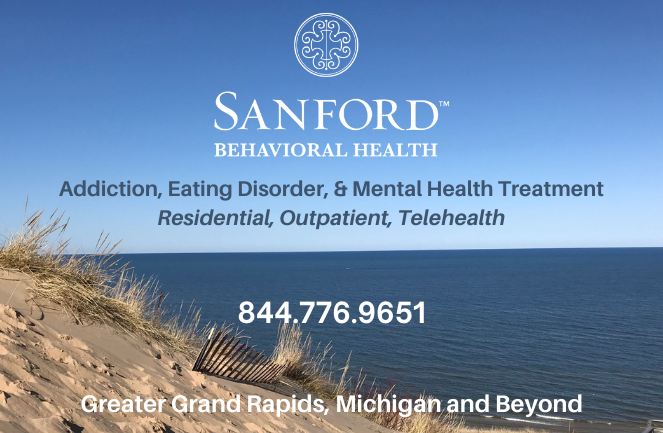High-Risk Recovery Situations – What Should I DO?

One of the easiest ways to identify risk is by categorizing situations as people, places, or things.
The National Council of Drug Abuse (NIDA) defines high-risk recovery situations as “those that threaten your recovery or trigger a strong craving to use substances.” One of the easiest ways to identify risk is by categorizing situations as people, places, or things.
People, Places, or Things
People may be those you have used with or are related to your use. It could also be people you have conflicts with, who make you want to use, people you celebrate with by using, or those who encourage you to use directly or indirectly. One study by Marlatt and Gordon indicated that interpersonal conflict accounted for over 50 percent of all relapse episodes. In this study, social pressure accounted for over 20 percent of relapse episodes.
Places are those areas where you have been under the influence or where you procured your drugs or alcohol. These can include bars, restaurants, clubs, and concerts. The beach or cabin in the woods can be a trigger. Particular aisles of grocery and drug stores can also trigger an emotional response.
Things are those events or objects that remind you of your drug or alcohol use. These can include alcohol and drug paraphernalia (corkscrews, wine glasses). They can consist of events such as parties, weddings, and family reunions. Listening to certain music can even be a trigger.
High-Risk Situations in Recovery
High-risk situations involve a person’s internal emotional state or external surroundings. 12-Step programs use the acronym HALT to describe them. Hungry, Angry, Lonely, or Tired. But it is also essential to be aware of feelings such as shame, embarrassment, anxiety, and depression. And boredom can trigger a sense of powerlessness and a desire to escape emotional pain. External surroundings can trigger intense feelings, reminding one of pleasant or stress-filled experiences. The COVID-19 pandemic and its aftermath have certainly impacted our emotional state and external surroundings!
Consider the following high-risk recovery scenarios:
It’s a lazy Sunday afternoon.
You are doing laundry and come across a shirt that needs to be dry-cleaned. You haven’t dry-cleaned anything since leaving treatment, and remember that the dry-cleaning bag is in the garage. While you search the garage, you come across a bottle of vodka, your previous substance of use. What do you do in this high-risk situation?
You are at your cousin’s house for your uncle’s birthday.
They are cooking what looks to be a stuffed chicken dinner. Your cousin opens the refrigerator and pulls out a six-pack of beer. She pours all six beers on the chicken. Then she states that dessert involves ice cream and Bailey’s. She looks at you and says, “It’s okay because it is part of the dinner and dessert, right?” High risk! What do you do?
You are on a business trip with clients you have never met (risky business).
Your boss has asked you to “wine and dine” customers to get the business contract. They ordered several bottles of wine for the table to drink to the success of the business merger. You know you will never see these people again. What do you do?
You are at your mother’s home.
Mom states she has a headache and asks you to bring her some aspirin. You open her medicine cabinet and find bottles of prescribed sleeping medications among the over-the-counter medications. Since leaving treatment, you have struggled with insomnia and its consequent fatigue. What do you do?
You plan to meet friends you have not seen in a long time.
You can go to the restaurant; however, no outdoor tables are available. Your friend suggests going to the open-air Bar and Grill across the street (an old watering hole). Your other friends agree it will be fun. What do you do in this high-risk situation?

Learn to recognize risky situations!
Recognizing High-Risk Scenarios
The first step is recognizing when you are in or close to a risky situation. It is important to pay attention to one’s problems and be aware of changes in thoughts and feelings. This will help detect warning signs as soon as possible.
High-risk situations are often individual and specific to someone in recovery. What is high risk for one person may not be for another. Identifying high-risk situations can help individuals in recovery prepare for unplanned occurrences and may also provide insight into why they resort to drug and alcohol use in the first place.
As evidenced by the above situations, it is also significant to realize not everyone will be glad to know you have an addiction. Or to know you are doing something about it. It takes discernment to understand with whom you share the details of your recovery. Education can dispel stigma, and persons in long-term recovery express pride about their healing. Sharing stories is a way to connect with people and inspire others struggling with behavioral health conditions. Your story can also demonstrate that treatment works and recovery is possible. Addiction allows people to change their lives, which is both difficult and rewarding.
One of the best things individuals in recovery can do for themselves is to anticipate high-risk situations before they occur. This provides an opportunity to develop a plan for how they will respond. Although not all high-risk situations can be expected, most people in recovery can still predict what may occur shortly and develop a plan of action. So, coping mechanisms should include a detailed action plan for how to respond to the situation.
Terry Gorski is an internationally recognized expert in substance use, mental health, violence, and crime. The Gorski Relapse Prevention Model includes the following nine steps, which he believes to be imperative in developing a coping or relapse prevention plan:
Stabilization:
The first step within this model is to re-center yourself away from drugs and previous negative tendencies. Taking those initial steps into sobriety by completing detox is your starting line.
Assessment:
Any negative patterns or problems contributing to past relapses are identified and resolved within the assessment step. This is inclusive of the following factors: life history, alcohol and drug use history, as well as recovery and relapse history.
Relapse Education:
It is time to get informed. Understanding the process of relapse is vital while in recovery. This not only goes for the person in recovery but their family and twelve-step sponsors as well.
Warning Signs Identification:
Knowing what can get you into trouble can help you avoid it. Writing out a list and analyzing each warning sign helps those in recovery continue their walk of sobriety.
Warning Sign Management:
While knowing and understanding your warning signs is great, it means nothing if you don’t have a coping strategy to fight these temptations. Creating and following through with exit strategies is crucial while in recovery.
Recovery Planning:
Recovery isn’t meant to be done alone. In recovery planning, the recovering person is placed into contact with people who will help them resist previous tendencies.
Inventory Training:
Inventory training prepares you with morning and nightly routines to anticipate, evaluate, and avoid high-risk situations.
Family Involvement:
Getting family involved can be the make or break in many situations. Bringing your loved ones into affiliation with groups like Al-Anon will help prepare them with everything they need to know to care for their family in recovery.
Follow up:
Recovery is never static. Here, it is crucial to follow up monthly for the first three months, then quarterly for the following two years, and annually.

Develop coping skills; even during a pandemic, you can get outside and clear your head!
Developing Coping Skills for Risky Situations
Developing coping skills happens in incremental changes, like learning how to water ski, snowboard, or ride a bike. There are repeated attempts at learning these activities, such as falling, adjusting, and trying again before a person masters them. Written relapse prevention worksheets can be constructed in treatment and found online to assist with this planning. Relapse prevention and recovery groups are also ways to process feelings, events, cues, and triggers and further develop sobriety strategies.
The phrase “people, places, and things” is most often used in conjunction with triggers to use. But it also has a positive side for recovery in managing an environment in which to thrive. Cognitive Behavioral Therapy, Mindfulness, Yoga, and exercise are all ways of mastering thoughts, feelings, and behaviors. In addition, changing into new and healthy relationships, homes and environments, and self-care are all important in maintaining life balance and decision-making.
Still trying to figure out what to do in the high-risk scenarios above? Here are some recommendations:
If you come across a bottle of alcohol or pills and you feel triggered, call a support person immediately. Ask them to help you dispose of the alcohol or medication, if necessary. Be honest with others in sharing that this substance is a problem for you. This goes for social events as well. If you find yourself in a situation where others are drinking, and it is expected that you join in, have a plan to excuse yourself. If you cannot leave a using situation, develop a plan to have sober support available. And think positively in the face of danger. Again, talk openly and honestly with others about your need to care for yourself. You may be surprised at the level of acceptance and respect you receive.





